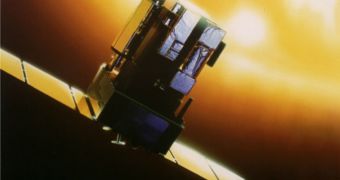Starting in December 2009, the Sun appears to have intensified its levels of activity, as evidenced by the growing number of sunspots appearing on its surface. These phenomena are a clear indicator that things are picking up again, after almost two years of nearly-perfect calm. Throughout this time frame, our parent star remained undisturbed for nearly 70 percent of the time, which was very unusual.
Now, new data from the European Space Agency's (ESA) venerable SOHO spacecraft appears to indicate that things are picking up, and that more and more sunspots are beginning to appear on the star's surface. This is nothing but good news for solar physicists, as they were beginning to wonder if the Sun is not going through a “phase” as it remained clear of dark spots. It is estimated among experts that the current solar minimum, from which the star is only now appearing to get out of, was the longest in the last century.
At one point, experts were even concerned that a new Maunder minimum might ensue. “This last minimum was much deeper and longer than anybody predicted. We were beginning to joke that we had entered another Maunder minimum,” says ESA SOHO project scientist Bernhard Fleck. A Maunder minimum is a reference to a time frame that took place between 1645 and 1715 when, according to existing records, it did not appear on the Sun for the most part. This is precisely what went on in 2008 and 2009, and experts were beginning to wonder whether they had another of these events on their hands.
“I think we are heading for something like the early 20th century when everything was much less active. When SOHO was launched almost 15 years ago, understanding the solar cycle was not one of its scientific objectives, now it is one of the key questions,” Fleck adds. He adds that the solar cycle may in fact have been more active in the last couple of decades, which prompted solar physicists to create a false idea about how strong the solar maximums and minimums should have been. It may be that the recently-recorded levels of activity are simply a return to normal, the scientist concludes.

 14 DAY TRIAL //
14 DAY TRIAL //